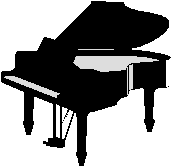
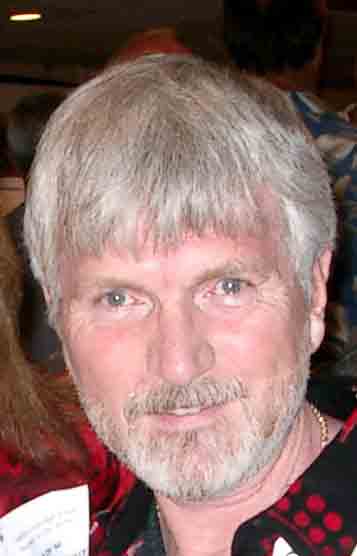
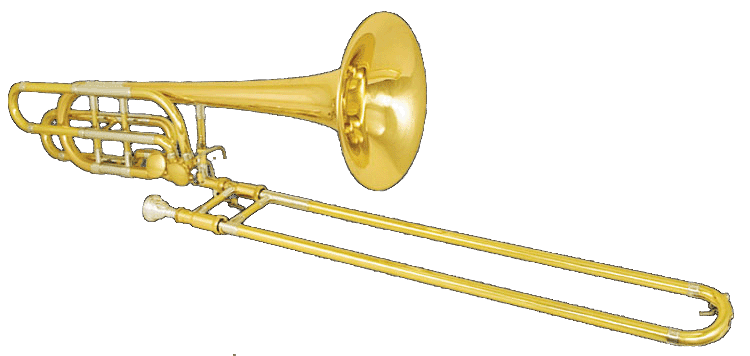
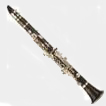

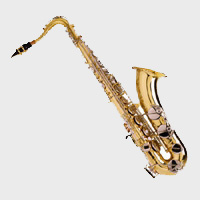
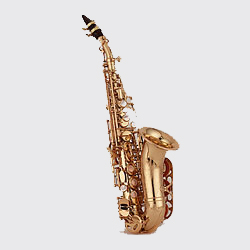

"How To Build Your Own Plate Reverb"



![]()





How To Build Your Own Plate Reverb: A Concise Step By Step Process Back by popular demand, here's a discussion of the plate reverb, as well as precise instructions on building a plate reverb unit.
October 11, 2011, By Bob Buontempo
As Larry Crane, editor of Tape Op magazine, noted, “Plate Reverb. Many people ask me about this and I usually tell them to listen to some records from the ‘70s and ‘80s and look for reverb with a thick, pillowy sound that doesn’t obscure the vocal yet doesn’t quite sound like an actual room.”

In 1983, I was the owner of a 16-track studio. One of the things that really separated the sounds of the recordings we could get from the sounds of the recordings made in major facilities was the quality of the reverb.
Spring reverb was the only affordable system for small studios at that time, since EMT plate reverbs ran almost $9,000!
EMT’s patent was about to expire, and when it did, competitors came out with similar products. While they were cheaper, they still averaged $2,500!
So an engineer who worked with me, Joe Errico, and I researched plate reverbs and came up with an affordable way to build one.
This article presents our plans for making a plate reverb unit, which won’t require any electronics other than your mixer and a headphone amp. (If you don’t have these items, you’re not ready for a reverb plate anyway.)
The construction cost will be between $100 and $500, depending upon what components you already own - a lot less than the $2,500-$8,500 for commercially available units.
Later in the article, I’ll also detail how to find and evaluate the materials needed, construct the frame, mount and tune the plate, fit the driver and pickups, and add dampening to the plate.
It concludes with some “tricks” and techniques for enhancing plate sound.
Almost everyone with a knowledge of recording is familiar with spring reverbs, or at least with their sound. (They were the most common type reverbs used in studios when this article was originally written. Now digital reverberation units are the type most often used.)

Most low-end or semi-pro reverb units were based on the spring principle, as are most musical instrument amps or accessories with reverb. That “spring sound” can range from excellent to “under water,” depending on the unit and the way it is used.
Figure 1: The finished reverberation plate. (click to enlarge) The reason spring units sound the way they do is because that is exactly what they are; springs. There are usually several rows of them, possibly with two or three strung in a series. Just like the springs on your screen door, they will “twang” or “boing” when plucked.
However, instead of being plucked, the reverb springs are excited at one end by a driver and mic’d at the other end by a pickup - and so are the twang and boing, especially on transient material.
Although some designers have used tricks to smooth out their sound with excellent results, they may still have spring characteristics inherent in their sound, as well as a limited bandwidth, especially at high frequencies (8 kHz+).
Plate reverb has none of these drawbacks, although it can go from sounding like a true concert hall to an oil drum being banged with an ax in the subway, again depending on its application and who’s using it.
Typically, the plate is a large (one by two meters, or 39.37 by 78.74 inches) sheet of steel suspended in a tubular steel frame.
In theory, the plate simulates a large concert hall, or church, with a decay time (RT-60; the time required for the level of the reverb to diminish by 60 dB) of approximately five seconds at approximately 500 Hz. A driver attached to the plate excites it, and as the sound waves travel through it, the plate flexes.
The plate’s motion is then picked up by one or two contact mics, and added to the dry signal at the mixer. Transients do not twang or boing, but behave much as they would in a reverberant room, sounding smooth and natural.
As an additional feature, incorporating a damping plate to change the decay time of the reverberated signal can be included in the design.
It was at the Broadcast Technical Institute in Nuremberg, and later at the Institute for Broadcast Engineering in Hamburg, West Germany, that the first reverberation plate using these principles was developed.
EMT (in Germany) patented and made the only available units until the patents ran out a few (now 25 or so) years ago. Since then, several American and foreign companies have come out with newer units.
The plans presented here are of a hybrid unit that can be optimized to the design of any of the commercial units you may favor.
Construction As mentioned in the introduction, the design of this unit will incorporate your mixer and cue (headphone) system as all the electronics that are required.
We will mostly concentrate on the construction of the mechanical system and the transducers-the frame, plate, driver, and pickups.
This is probably the most critical of all the steps involved in the process, so be careful. The plate is actually “the instrument” used for the reverb, so it should be chosen as if it were a fine acoustic instrument.
EMT used a 1-meter by 2-meter cold-rolled steel plate approximately 1/64-inch thick. Lawson, who manufactured “The Plate” (LP1 and LP2), used basically the same size plate, but it’s a little thinner.
On the other hand, some manufacturers used stainless steel. The Ecoplate by Studio Technologies used approximately the same gauge in stainless, as did Audi-ence, while DB Cassette of Sweden, who manufactured the Stocktronics Plate, used a stretched, hardened piece of cold-rolled stainless approximately 0.03 inches thick.
The question of what kind of steel to use is totally subjective. Reasons claimed for using stainless steel include consistency, high density, and the fact that it’s tarnish proof, while regular steel users claim smooth, more natural sounding reverb and a less “metallic” decay. Only you can decide what sound you prefer.
Befriend your local steel warehouse owner, bring two associates, and prepare to listen. Most steel sheets come in 3-foot wide sheets; this is close enough to 1 meter for our purposes.
The length, however, is usually 8 feet, and cutting charges to make it 6 feet might be added to the price of the steel. Some places also have minimum orders, so try to buy your plate and frame materials from the same source to save added expense.
If the owner of the shop will allow (and it’s worth a healthy tip to have him help you out), have your two friends hold the sheet of steel horizontally as tight and still as possible, such that it doesn’t “thunder.”
Tap it in the center with a key and listen for a “sizzle” and long decay in the high frequency, as opposed to a “clangy” sound.
The delicacy and length of the high frequency decay are what you are really after, since the bottom and mids can be dealt with more successfully by tensioning.
Try several pieces of different types until you find what you want. Be selective and take as much time as possible, because this is the heart of your system and you must be happy with it.
Including the cutting, the steel sheet should run between $50 and $100, depending on the type you choose. Reinforcing the corners by spot welding a triangular piece of steel on each one is the recommended procedure.
For corner-cutting by the cost conscious, however, it’s not totally necessary, since this can run an additional $25 to $50.
However, it really should be done if at all possible, because the plate will be put under heavy tension, and holes will be drilled in those corners later in the plate-preparation procedure.
The holes should be drilled after the frame is completed, so a more “custom” fit may be made.
The Frame The frame is simply 1 to 1–1/2 inch tubular steel, either round or rectangular-shaped, and welded together at the (preferably mitered) corners.

Figure 2: The tubular steel frame is reinforced with three transverse support beams. (click to enlarge) Simple angle iron can be used, if absolutely necessary.
The frame should be reinforced by three transverse beams (Figure 2). Near both sides of each of the four corners (eight all together), weld flat pieces or slats of steel, which may be channeled for extra strength.
Note that Joe and I enhanced the design by adding 2 extra tensioning slats in the center of the long dimension of the frame, to assist in the tuning of the plate.
The slats should extend 1-1/2 to 2 inches beyond the frame, and be about 1 to 2 inches from the corners. Holes will also be drilled in the center of each of the slats.
To determine the exact placement of the holes in the slats and in the plate, as well as the exact measurement of the length of the tubular steel for the frame, you must make sure the plate and the frame line up together.
Make the inside measurement of the frame 1 to 1-1/2 inches larger than the dimensions of the plate. Then lay the plate on top of the frame.
On the plate, mark the eight spots where the holes will be drilled. Then mark the frame where the eight slats will be welded. Next, mark the slats where the holes will be drilled.
When all the holes are drilled and the slats welded in place, paint the frame to stop rust and corrosion.
The next step is to suspend the plate in the frame. EMT used spring clips that held the plate in place and were also used to determine tensioning. These are weak, and often snap.
One of the improvements made by most plate manufacturers was to use stronger, heavier clips or hooks. Ecoplate used clips similar to those that secure fiber straps used on packages.

Figure 3: Detail showing correct positioning of suspension hook. (left) and the high quality yoke offered in the kit. (click to enlarge) We will use simple, tempered, hardened-steel hooks, threaded on their shafts. (Joe and I now utilize fiberglass clevis yokes with machine shop quality allen bolts to better control the tensioning and Plate/Frame isolation.)
If the hook is plastic-coated, and hard-rubber and metal washers are used, the plate and the frame can be totally isolated as far as direct metal-to-metal contact goes.
To suspend the plate, you will probably need help getting the hooks through the holes in the plate.
Slip the shaft of each hook through the holes in the slat; thread the washers and a nut of the correct size on the hook shafts, and hand-tighten all nuts (Figure 3).
The plate can now be suspended from the frame.

Figure 4: Driver detail, as used on several commercially-available plate systems. (click to enlarge) Now comes the subjective and fun part of the project-mounting the driver and pickups, and tuning the plate.
The Driver EMT, Ecoplate, and Lawson all used similar drivers. A bullet-shaped metal moving-coil “slug” is screwed into the plate. Two wires carrying the signal go to the coil and it is suspended in a large, heavy, circular magnet (Figure 4).
It is important to be sure the moving coil assembly does not rub or touch against the sides of the magnet. The coil and magnet are aligned using a plastic alignment disk.
The procedure is delicate, and transporting the unit sometimes misaligns the driver/magnet assembly.
Stocktronics and Audi-ence both used a wire rod attached to the plate on one end, and to the voice coil of a speaker on the other.
It can be moved with no realignment, since there is plenty of “play” in the movement of the rod, and this is restricted to within limits by a rubber guide.
The system we use is similar to both, but unique unto itself. It is also one of the main reasons that this plate can be built so reasonably.
This design uses a specially designed driver-similar to what used to be offered as a “coneless speaker” several years ago.
Whatever the driver is attached to becomes the “sounding board” and vibrates enough to reproduce sound.
Therefore, if screwed into a door, that door would become a “speaker.”
The specially designed driver (Figure 5) is an improved version of the coneless speaker.
To install the driver, simply drill a small hole, the size for the screw on the driver, in the center of the plate 2-1/2 inches off to one side of the center of the beam of the frame.
Figure 5: The specially designed driver. (click to enlarge) Screw the driver in the side of the plate, with the frame reinforcements toward you, about half way until tight. Attach a speaker cable to the two terminals on the driver.

Be neat and run the cable down the reinforcement with “ty-raps” or tape.
Now the fun begins.
Move the plate into your studio. Make sure it is standing upright. Connect the other end of the speaker cable attached to the driver to the output of your cue (headphone), or dedicated tube, class A, MOSFET, etc., amplifier.
Put on a tape with a steady snare-drum track or a constant vocal track. Send only the selected track to your cue and, voila, the signal will be heard on the plate.
Assuming it is the snare track, what you should hear is a thunderous snare sound similar to “Bridge Over Troubled Water” or “The Boxer” by Simon and Garfunkel (although I think they used an elevator shaft for their reverb chamber).
But, anyway, congratulations! You have a working plate reverb!
Now comes another fun part - using your opinions, taste, and ego to get it to sound just the way you want. This will require your choice of pickups as well as tuning and equalization.
Pickups All the commercial units use piezoelectric pickups or accelerometers. These are basically contact mic/pickups and are available from several manufacturers.
As a matter of fact, you probably already own one, or at least know someone who does. Examples of available units are those from Barcus-Berry, Fishman, and Frap.
Some pickups need no preamp and can be plugged into the echo return(s) on your board.
You can also return the output of the pickups through two mic inputs on your mixer, using a tube, discrete class A, transformer or transformerless (differential), FET, IC DI.
These are some of the variables that you must work out depending on the console you own, and the pickups you use.
Try as many pickups as you can borrow until you find one that you like and that easily interfaces with your mixer.
For a mono reverb, place the pickup near one of the side frame reinforcements. Experiment by moving the pickup up around, and down, on both sides of the reinforcement, until you find the spot you like.
Then secure the pickup by epoxy, wax, putty, or whatever the pickup manufacturer recommends. Run the pickup wire down the reinforcement, again using “ty—raps” or tape.
For a stereo unit, do the same thing on the other side (Figure 6).

Tuning The Plate With the pickups in place, the plate itself now comes into focus for tuning. In theory, think of the plate as similar to a drum head. Also, correct tuning means all the lugs are equally tensioned.
Figure 6: The finished reverberation system, with driver and pickup(s) in place. (click to enlarge) So, start by holding the hooks suspending the plate in the frame with a pair of “vice grips” or similar pliers, and tighten the nut on that hook with a ratchet wrench. Do this evenly around all eight hooks.
How do you know when the plate is tuned? Good question. You don’t, really, because every manufacturer used their own method for tuning.
EMT shipped units pre-tuned except for four nuts, which were supposed to be tightened by exactly 1/4 turn when installed. Most independent EMT servicemen will tell you to tighten each one until a spring suspension clip breaks, and then replace it and tighten until 1/8 of a turn before it breaks again!
Lawson and Audi-ence shipped their units pre—tuned, no adjustment necessary. Ecoplate supplied a spring gauge and specified pushing the gauge against the plate at all eight plate tensioning points, until there was approximately 150 pounds of pressure at each point.
As a total contrast, Stocktronics used no tuning at all, claiming the steel was pre-stretched/tuned during manufacturing. In fact, their plate was simply suspended by six springs in a very light aluminum frame.
Which method is correct? Any/all/none, depending on your point of view. One thing is certain, though. If you like the way it sounds, it’s right. So I suggest tuning by ear.
Remember, the tighter the plate, the tighter the bottom. It is usually better to over-tension than under-tension. Also, listen for “flutters” or “beats” (like two slightly out-of-tune guitar strings) on the decay of the reverb, and even-out the tension until they disappear.
EMT warned about the “oil can effect,” a very metallic sound that is heard on an obviously out-of-tune plate.
What I suggest is to find an existing plate you like in a studio near where you live. Rent an hour of time, and bring along a tape of various tracks-snare alone, drum kit, congas, tambourine, voices, piano, and run it through the plate.
Record the reverb return on one track of a two -track or cassette, and your original dry signal on the other. Bring it back to your place and pan the dry signal to the center of your monitors, and the reverb send from their plate on the right.
Send the dry signal to your plate, return it to your mixer, and pan it to the left. Now you can directly compare your plate to theirs, and tune and equalize until the you sound of is equal to, or better than, theirs (again, subjectively speaking).
A Case For The Plate Theoretically, you’re done - but you really need a place to put your unit and something to put it in.
The best place would be a separate quiet room or closet so that no outside vibrations will affect the plate. Even so, a case for the unit is suggested. The case is simply a wooden box that the frame can sit in.
EMT, Audi-ence, and Ecoplate used pressboard, Lawson used plywood, while Stocktronics used only paneling.
The frame can be placed in the case on rubber feet, or better yet, suspended in the case using rubber straps with hooks, such as those found in automotive stores for holding down luggage.
The straps can be wrapped around the frame and the hooks hooked to holes or eyelets in the case. This way you can literally pound the case with little vibration.
Eyelets can also be put on the outside of the case on each side so that rods can be inserted for carrying.
If you’re only using the plate during mixdown, the studio isn’t a bad place for it. It probably has the best isolation from your monitors and has easy access to your mic inputs and headphone jacks.
The case only has to be a few inches bigger than the entire unit on each side, unless you plan on using the next step - damping.
Damping The decay time for the reverb as it now stands is approximately 5 seconds at 500 Hz.
This is fine for most applications, but is easily altered by fitting a damping plate, which can be a piece of plywood the same size as the plate and covered with an absorptive material (such as compressed fiberglass, styrofoam, or foam rubber) that can be moved closer to or farther from the plate to alter the decay time of the reverb.
EMT, Lawson, Audi-ence, and Ecoplate all moved the damping plate in parallel to the steel plate, from almost touching (1/8 inch) to 6-8 inches away. This is accomplished by forming a parallelogram type set-up where two metal arms attach to the frame and to the damping plate so that when the damping plate is moved, the arms travel sideways and move it closer to the steel.
Stocktronics simply hinged their styrofoam damping plate at the bottom and then pulls the top closer to, or farther from, the steel, claiming this gives a more uniform frequency response in the decay characteristics. A handle or lever on the damping plate facilitates moving it.
It can also be remote-controlled using servo motors and cams, but this is beyond the scope of this article. The choices of materials, method, or even use of damping at all is left up to you.
Plate Tricks Using equalization will help you get the reverb characteristics that you are after much easier than tuning alone.
In fact, all the commercial units have some sort of equalization in their electronics, either a bass cut-off on the pickup amps, a high-frequency boost to the drive signal, or both.
EMT cuts the bottom at 80 Hz, but many engineers use a 700 Hz high-pass filter to accentuate the top.
If you have a few equalizers to spare (i.e.: tube, Class A, graphic, parametric, etc.), it would be a good idea to patch one to the send and one to each return. This will allow you to match the sound of almost any of the commercial plates or any plate sound you have heard. (We have designed a drive signal response shaper that we feel emulates the sound of our favorite EMTs.)
Take the send to the plate and first put it into your delay line. Use a full-bandwidth setting so that you don’t lose any top end.
The effect is that you’re in a large hall where the first reflection isn’t heard until milliseconds after the initial dry signal. The longer the delay, the bigger the hall.
A good example of an extra long pre-delay is the reverb on the snare at the end of “It Keeps You Running” by the Doobie Brothers. You hear the snare hit first-and the reverb later. Sort of “boom ... cha!”
This will also bring out the deficiencies of a unit, and if you try it on a twangy spring, the time delay doesn’t let the program mask the boing of the snare transient. But with a plate, this is no problem.
To shorten the decay without damping, a noise gate comes in handy. Placed on the return, the release time can be shortened.
When the attenuation and threshold are properly set, the decay will be gradual and smooth, only shorter. If the controls are set to dramatically attenuate the decay, it can be rhythmic.
For example, if hand-claps are done on the downbeat, the reverb decay can end sharply and completely on the upbeat.
You can also gate the send to the plate such that you only reverberate certain signals. For example, if you want reverb only on the snare track, and it wasn’t gated when recorded, gate the snare track to the send, and you will only get the reverb on the snare beats, not on any tom toms, bass drum, or cymbals that might have leaked onto your snare mic.
If you drive the plate a little harder, the effect will sound like a series of fading repeating reflections analogous to what it looks like when you drop a pebble in a pond.
Early reflections can be achieved by using a digital delay, in combination with the plate, as well.
Experiment and you can get any sound you’ve heard, and some you haven’t.
“So, if I use one plate reverb with a lot of top end and a gate for the snare, and another one with a lot of bottom for `thunder toms,’ and one more with a long pre-send delay and high frequency boost for that `sizzly vocal’ sound; maybe one for the strings… with maybe a little flange on the return ... and maybe one more….”
Plate Reverb Required Parts 1 x Steel Sheet (your choice) Approx 30 feet x Tubular Steel or Angle Iron (for frame) 10 x Threaded Rubber Coated Mounting Hooks 10 x Nuts (to fit Hooks) 10 x Rubber Washers 10 x Fender Washers 1 x Driver (your choice) 1 or 2 x Pickup Transducers 1 or 2 x Preamps, DI boxes, Transformers for Pickups (if needed)
Optional Parts 1 x Case (your choice of style and material) 1 x Damping Mechanism with Absorptive Material (your choice) Suspension Method (to isolate plate and frame from case)
Editors Note: Since this articles original publishing, DIY plates have become even more popular. While the parts Bob referenced are increasingly difficult to source, a good starting place for those interested is his website.
Bob Buontempo has more than 30 years of professional recording experience, and has been the president/owner of Buontempo Entertainment Services since 1976. He has also taught numerous recording and audio educational courses over the years.
Return to article How To Build Your Own Plate Reverb: A Concise Step By Step Process